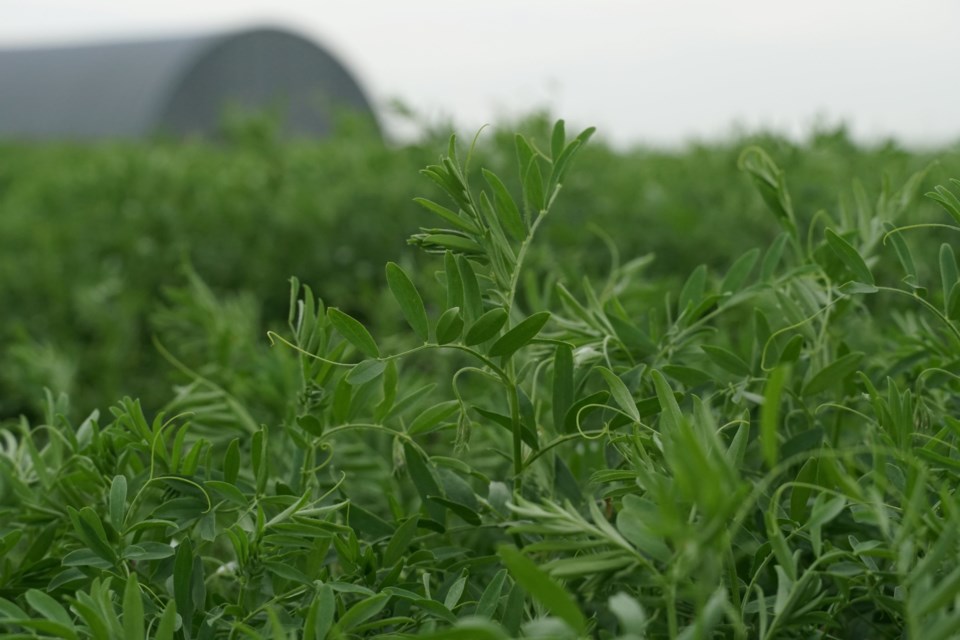REGINA — Producers are reporting overall good crop, pasture and hay conditions throughout the province this week, according to Sask. Agriculture’s Weekly Crop Report.
Rain was widespread, with some areas receiving significant amounts along with isolated hail events. Excess moisture in some regions of the province is continuing to contribute to flooding of crops in low lying areas. In other regions of the province that have received reduced rainfall amounts, moisture would be welcome in the coming weeks to support crop, pasture and hay development.
Overall, crop development continues to fall behind normal for this time of year due to the cooler and wet conditions. The potential for warmer temperatures and drier conditions in the coming weeks will support crop advancement and haying progress.
The amount of rainfall was variable over the past week across the province. The highest rainfall recorded fell in the Goodeve and Ituna areas at 143 mm and 133 mm respectively. The Rosetown and Biggar areas received 130 mm and 120 mm respectively. The Semans area received 112 mm and the Smiley area received 108 mm over the past week.
With the frequent rainfall, topsoil moisture is continuing to increase in the province. Cropland topsoil moisture is rated as 14 per cent surplus, 80 per cent adequate and six per cent short. Hayland topsoil moisture is reported at nine per cent surplus, 84 per cent adequate, six per cent short and one per cent very short. Pasture topsoil moisture is five per cent surplus, 84 per cent adequate, nine per cent short and two per cent very short.
Producers are looking forward to the potential for warmer weather to assist crop advancement. Varying stages of development are reported across the province:
- Three per cent of winter cereals are in the tillering stage, eight per cent at stem elongation, 22 per cent at flag leaf, 57 per cent heading and 10 per cent at the dough stage.
- Five per cent of spring cereals are at the seedling stage with 33 per cent tillering, 33 per cent at stem elongation, 23 per cent at flag leaf and six per cent heading.
- Six per cent of pulse crops are at the seedling stage with 71 per cent at the vegetative stage of development and 23 per cent flowering.
- Fifteen per cent of canola and mustard are at the seedling stage, 48 per cent at the rosette stage, 26 per cent bolting and 11 per cent at the flowering stage.
- Thirty-three per cent of the flax is at the seedling stage with 63 per cent at stem elongation and four per cent flowering.
Producers are reporting overall good pasture conditions throughout the province. Currently, 29 per cent of pastures are reported as excellent, 57 per cent are good, 13 per cent are fair and one per cent are reported as poor.
Many producers slowed or delayed their haying operations with the frequent and forecasted rains over the past week across the province. Six per cent of the hay crop has received its first cut with three per cent baled or silage. Hay quality is rated as 25 per cent excellent, 69 per cent good and six per cent fair.
With the continued rainfall throughout the province, excess moisture continues to be the main cause of crop damage with some areas reporting severe damage. Some regions continue to report that low lying areas have standing water with limited chance for crop recovery within these areas. Other areas of the field that are saturated have crop yellowing, stunting and root rot development due to moisture stress. Hail and wind were also reported for the week which resulted in minor to moderate crop damage. Gophers continue to be a problem, notably in canola, with some areas reporting moderate to severe damage. The cool weather has slowed grasshopper development in many areas, but producers will still be monitoring their fields in the coming weeks. As canola continues to advance, flea beetles become less of a concern for crop damage. Producers continue to note leaf diseases in cereals and the start of pulse disease development. Over the coming weeks, producers will be applying fungicide to slow disease progression in their fields.
As most producers wrap up weed spraying, some acres are yet to be covered due to the frequent rain and wind delays. In the coming weeks, fungicide spraying will commence with some areas of the province having already started. Haying will progress in many regions and begin in those areas that have been waiting for drier conditions. Producers will continue to monitor their fields for pests and diseases.
Producers are reminded to keep safety top of mind while working. For any crop or livestock questions, producers are encouraged to call the Agriculture Knowledge Centre toll-free at 1-866-457-2377.
A complete, printable version of the Crop Report is available online - Download
Follow the 2024 Crop Report on Twitter at @SKAgriculture.




